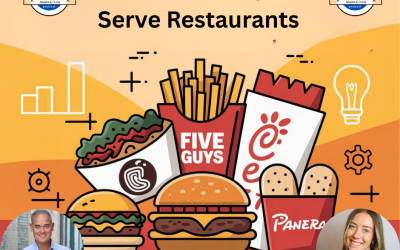Delivering Marketing Joy is an award-winning interview show that helps marketers level up. Each week, Kirby Hasseman interviews the best and brightest minds in marketing to help you level up. This time on Lessons from DMJ, Kirby talks with Joey Coleman about how to never lose a customer again. Watch now!
In this insightful discussion, Kirby Hasseman interviews Joey Coleman, the renowned author of “Never Lose a Customer Again.” The conversation centers on the crucial aspect of customer retention, an area often overlooked by businesses. The focus of many companies is predominantly on acquiring new customers, with less attention given to maintaining existing ones. However, Coleman asserts that a shift in mindset is necessary to concentrate on what happens post-sale, which is equally, if not more, important.
Throughout the conversation, Coleman provides a wealth of knowledge and practical advice on how businesses can improve their customer retention strategies. He delves into the reasons why businesses focus more on acquisition, the importance of customer retention, philosophical and practical approaches to customer retention, the concept of secondary customers, and practical tips for improving customer retention. He also emphasizes the significance of naming processes and using language that resonates with customers. This article aims to encapsulate the main points of this enlightening discussion.
Why Businesses Focus on Acquisition
Joey Coleman begins by explaining the biological and operational reasons for businesses’ focus on acquiring new customers. Humans are biologically predisposed to seek new experiences and novelty, a trait that often translates into business operations. This predisposition is further reinforced by the operational structure of organizations, which are often led by CEOs with marketing or sales backgrounds. These leaders naturally lean towards strategies that involve acquiring new customers, as this is their area of expertise.
However, Coleman suggests that this focus on acquisition often comes at the expense of customer retention. While acquiring new customers is important for business growth, retaining existing customers is equally crucial for sustainability. He argues that businesses need to strike a balance between these two aspects to ensure long-term success.
The Importance of Customer Retention
Emphasizing the importance of customer retention, Coleman points out that between 20-70% of new customers stop doing business within the first 100 days. This startling statistic highlights the need for businesses to focus on delivering a remarkable customer experience at every step of the customer journey. By keeping customers, businesses can increase revenues, profits, and retention.
He also stresses the importance of critically analyzing each step in the customer journey. By understanding the customer’s experience at each stage, businesses can identify areas for improvement and take the necessary steps to enhance their service. This not only improves customer satisfaction but also increases the likelihood of customer retention.
Philosophical and Practical Approaches to Customer Retention
Delving into the philosophical and practical aspects of improving customer retention, Coleman discusses the need for businesses to be aware of what happens after the sale. This involves mapping the customer journey to identify areas for improvement and delivering a remarkable experience consistently. By paying attention to the post-sale experience, businesses can ensure that customers remain satisfied and continue to do business with them.
He also provides practical tips on how to improve customer retention. This includes systematizing follow-up and project success reviews, using language that resonates with customers, and delivering a remarkable experience at every stage of the customer journey. By implementing these strategies, businesses can significantly improve their customer retention rates.
The Concept of Secondary Customers
One of the unique concepts that Coleman introduces is the idea of secondary customers. These are the people affected by the decision or involved in the process, but not necessarily the decision makers. By serving these secondary customers, businesses can enhance their customer retention strategies.
Examples of secondary customers in the promotional product space include the recipients of the promotional products, the people involved in the purchasing process, and the people who interact with the promotional products. By serving these secondary customers, businesses can create a positive experience for all involved, leading to long-term retention.
Practical Tips for Improving Customer Retention
Throughout the discussion, Coleman provides a range of practical tips for improving customer retention. This includes mapping the customer journey to identify gaps and areas for improvement, systematizing follow-up and project success reviews, and using language that resonates with customers. By implementing these strategies, businesses can significantly improve their customer retention rates.
He also emphasizes the importance of using language that resonates with customers. This involves using terms and phrases that align with customer expectations and convey the value of the product or service. By using language that resonates with customers, businesses can enhance their customer experience and increase retention.
The Significance of Naming Processes
One of the key points that Coleman highlights is the importance of naming processes. He suggests that the language used to describe processes should align with customer expectations. For example, renaming follow-up to project success review can create a more positive perception of the process and demonstrate a commitment to constant improvement.
By naming processes in a way that resonates with customers, businesses can build trust and demonstrate their commitment to delivering a remarkable customer experience. This not only enhances the customer experience but also increases the likelihood of customer retention.
Conclusion
In conclusion, Joey Coleman encourages businesses to constantly strive for improvement and to serve their customers and employees in a remarkable way. He suggests that by focusing on customer retention and delivering a remarkable customer experience at every stage of the customer journey, businesses can achieve long-term success.
Thanks for learning from the latest “Lessons from DMJ” with Joey Coleman. You can find all of the content we create on our blog page here. And if you want to create a marketing campaign that truly Hits The TARGET, check our FREE TARGET Marketing Playbook here.





